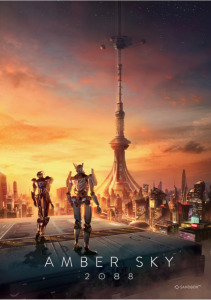A generation ago, shopping malls were thriving parts of the social scenes in cities and towns across the United States. Young people flocked to arcades and movie theaters housed within them. Now, it’s virtual reality that might bring back that culture thanks to companies like Sandbox VR.

Following success in Hong Kong, the company is now expanding into the United States with locations in San Francisco, Los Angeles, and Vancouver. The company’s San Francisco location is part of the Hillsdale Shopping Center in San Mateo, and it recently announced a partnership with Westfield Malls to expand even further into the shopping centers in other cities.
Earlier this year, Sandbox VR received $68 million in Series A funding led by Andrew Chen from Andreessen Horowitz.
Real-Life Action in a Virtual World
Sandbox VR allows groups of friends or family members to team up for a trip through one of its virtual environments. While the technology is the same as in-home VR, founder and CEO Steven Zhao said the similarities end there.
“We combine real-time motion capture technology with virtual reality. Unlike at home experiences, ours is social, and we map your entire body,” Zhao said. “You can run, walk, crouch, jump, and high-five your friends, just like you can in real life.”
 Zhao describes Sandbox VR as “the closest thing to the holodeck from Star Trek or the Matrix that exists.” It’s an experience, he says, that is impossible to have at home.
Zhao describes Sandbox VR as “the closest thing to the holodeck from Star Trek or the Matrix that exists.” It’s an experience, he says, that is impossible to have at home.
Here’s a description from Amber Sky 2088, an experience released in early January:
The Rawcor invasion is advancing, and it’s up to you and your crew to stop them before it’s too late. Hop onto one of Earth’s last space elevators and take in the view of our planet from the upper reaches of the atmosphere, all the way into space while you escort a mysterious package you’ll need to protect Earth from destruction.
A New Form of Social Interaction
Sandbox VR is not the only company to integrate virtual reality into social interactions. Companies like The Void and High Fidelity also offer interactive experiences and treat virtual reality like a concert or other event with tickets and high production values.
Where Sandbox VR differs, Zhao said, is the level of interaction among participants. The dynamics of the experience and the final outcome can vary based on the people taking part.
“What we’ve seen is that our guests come back again and again, but with different groups of friends,” Zhao told ARPost. “Sandbox experiences are designed to be social. The experience is very different when you come with different groups of people.”
Rather than driving people apart by eliminating face-to-face interaction, Zhao said the Sandbox VR experience can actually strengthen the bonds between players by encouraging teamwork.
“We design our experiences so that your actions matter and have consequences,” Zhao said. “These three facets are the most important differentiators for our holodeck experiences.”
What’s Next?

Currently, Sandbox VR’s experiences are only available at one of its physical locations. This year, the company plans to open locations in Austin, New York, Tokyo, and Macau.
Zhao said the company plans to add at least three new experiences this year. He hopes to eventually get to a schedule where new experiences will be released much more frequently.
“Next year, we plan to release a new experience every quarter or so,” said Zhao. “We plan on releasing a new experience every week once we have more locations live around the world, just like movies.”
In addition to the Westfield Malls partnership, Sandbox VR will soon begin working with CBS Interactive on content development. These partnerships could allow Sandbox VR to truly become the next phase of out-of-home entertainment.




